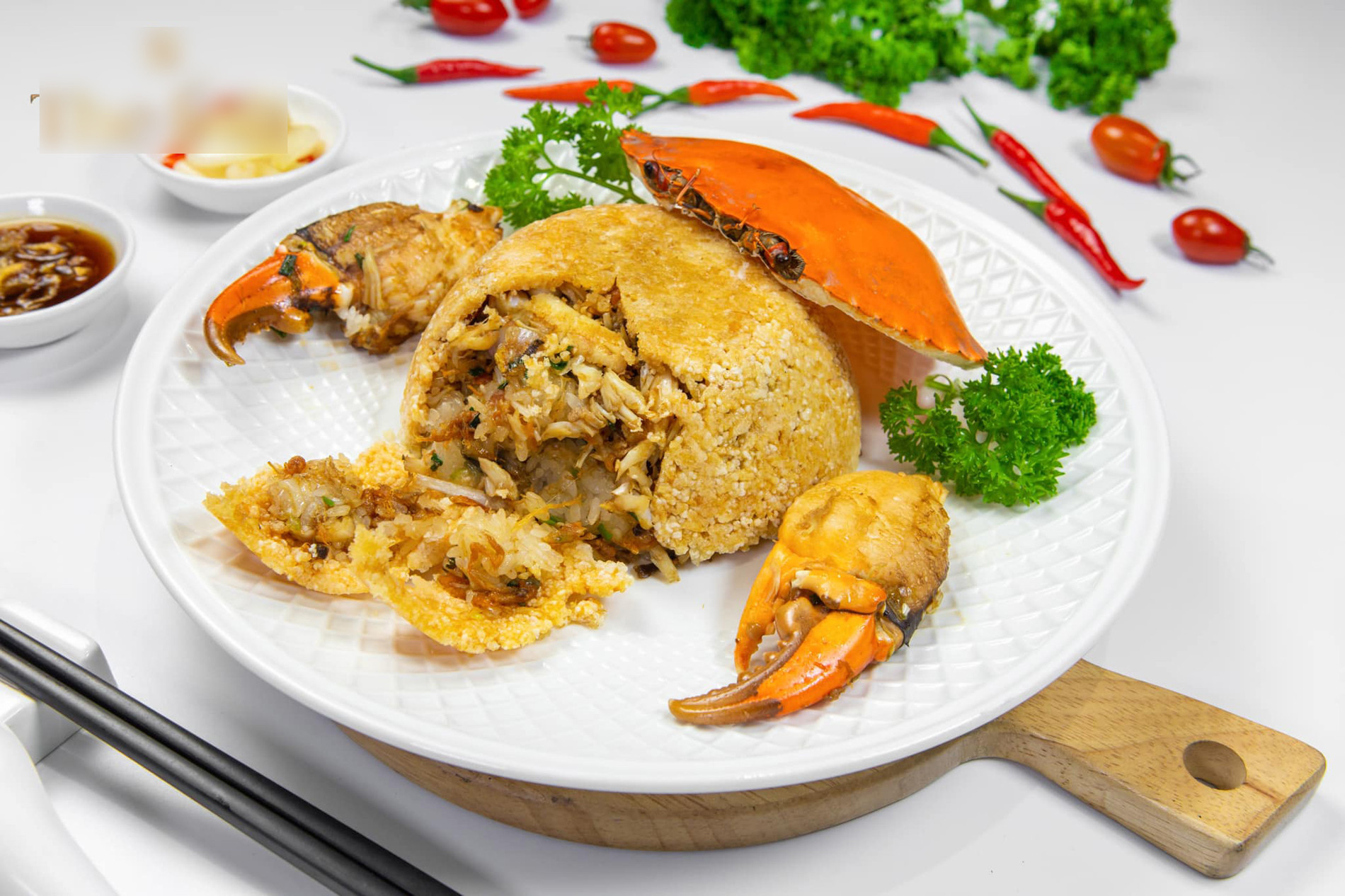
Jong-rak, a South Korean YouTuber, now living in Vietnam, has posted on his personal channel with 970,000 followers a video showing him trying a new version of a familiar dish of Vietnamese, xoi cua (steamed sticky rice with crabs).
The restaurant chosen by Jong-rak is located on Nam Quoc Cang street in district 1, HCM City. He ordered a VND660,000 serving. It was a plate of steamed sticky rice with a crispy fried crust and a soft, chewy filling made from crab meat and other ingredients. The plate was decorated with a crab shell and two shelled claws.
Prior to that, the South Korean diner once tasted steamed sticky rice at a street shop priced at just VND40,000 per serving. He was curious about the super-expensive xoi cua.
The video post by the South Korean YouTuber caught attention from people, who have left a lot of comments showing their surprise and thoughts about the ‘dish for the rich’.
Many people argued that there is no need to spend a lot of money on a familiar dish.
“’Xoi’, or ‘teamed sticky rice’ is a common dish for Vietnamese people that can be bought everywhere. With just VND25,000-30,000, you can order different versions of xoi, from salty and sweet xoi to xoi served with various toppings (green beans, shredded coconut, salted shredded meat, sausage, and braised pork) and eat your fill,” a netizen commented.
“I like street xoi, which is delicious, cheap and full of toppings,” another netizen wrote. “I could not imagine that xoi, a common dish for Vietnamese, would be so expensive.”
Meanwhile, other netizens argued that the super-expensive xoi deserves trying. The dish offered by the restaurant is expensive because it was a special version.
“The high prices of the xoi are understandable. The xoi is made of crab, an expensive seafood. Also, the restaurant is located in a central business district, so the owner of restaurant must pay a lot for premises and for labor costs,” Thu Le, a netizen, wrote.
“You get what you pay for,” another netizen, introducing herself as a content creator, commented. “It’d be better not to compare the xoi you buy from a street shop with the xoi you enjoy at a restaurant. The high-quality service at restaurant alone costs a lot of money."
“The two versions of xoi (street shop xoi and restaurant’s crab xoi) are quite different, from ingredients, to the spaces where you enjoy xoi, and the services you can expect,” she wrote.
She believes that there is no need to argue which xoi is more favored. “Please choose the dish that fits your taste and you financial capability,” she added.
Luong Thanh Hoang, the owner of the restaurant where Jong-rak tried the crab xoi, said the dish is expensive because of selective farm-fresh materials and elaborate processing.
“The crab must be the meaty crab from Nam Can sea area in Ca Mau province, because the crabs in the area have the highest quality which gives firm meat and natural delicious flavor. The rice used to make xoi is glutinous roundgrain rice, which is naturally fragrant and soft,” he said.
“In high tourism season, the price of fresh crabs is up to VND550,000 per kilogram. We have to pay many other kinds of expenses, from labor force to spices and chefs,” he explained. “The processing of the dish is also complicated and takes a lot of time. We have steam the crab, then remove the shell and separate the meat."
Regarding the process of making the crust, cooked sticky rice is pressed evenly around a steel bowl, with moderate thinness, and then deep-fried. The crust that meets standards must be crispy.
Only strong live crabs are chosen to make crab xoi. They must weigh 600 grams or higher. After crabs are cleaned, they will be steamed to retain the natural flavor.
The entire crab meat will be mixed with sticky rice and some ingredients such as Chinese sausage, mushrooms, shredded meat, and dried onions. As such, the crust is crispy, while the stuffing is soft and delicious.
“Each serving of crab xoi is made of the total meat of one crab,” he said. “The shell and claws are kept separately, both to decorate the dish and make it more appealing,” he explained.
Thao Trinh